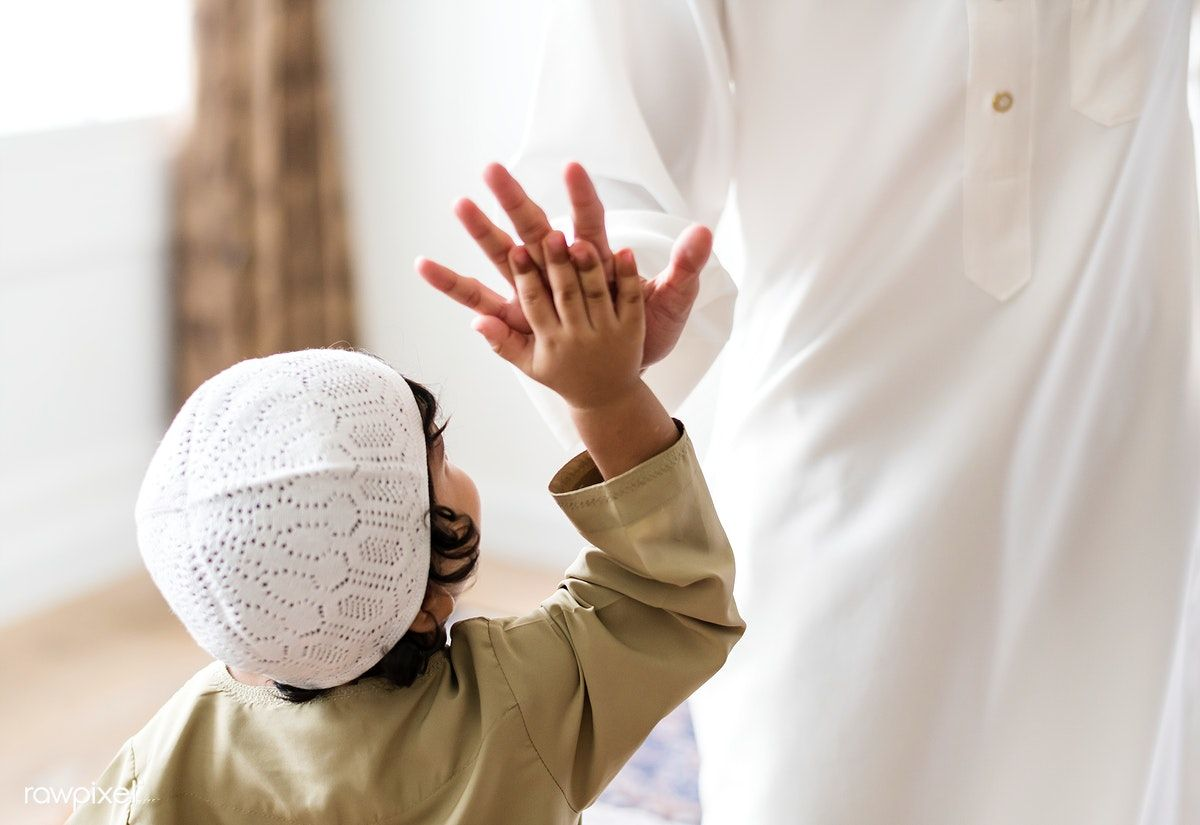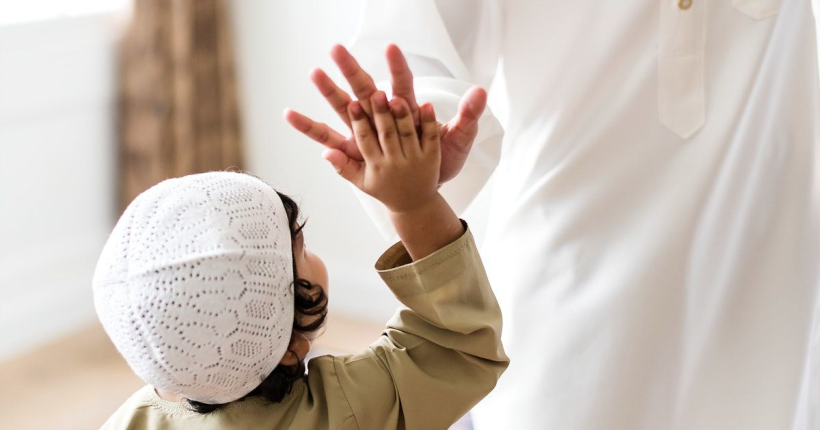You know, when you have wondered, how to teach your child good manners and to bring him to the beautiful doctrine of Islam? buckle up! we’re diving into 10 timeless prophetic stories that make Islamic manners for kids come alive like never before.
These are not just stories of Prophet Muhammad of manners for kids, but character training in kind words, sincerity and smiling. And even in case your little one is in need of a push to share his toys or say thank you, maybe these stories will do the trick.
Why Teaching Manners Through Stories Works Like Magic
Children love stories. And when they read those stories that have real heroes in them, such as the Prophet Muhammad ﷺ, who demonstrated impeccable manners in all circumstances, they not only listen to them but they absorb.
Prophet Muhammad tales on manners among children provide children with examples of the way respect, kindness and empathy would appear in real life. You can say, instead of saying, Be polite, remember how the Prophet talked kindly to all? and before long the message is retained.
It is the magic behind prophet muhammad stories about manners for kids: they bring the virtue into sight.
Story 1: The Prophet and the Old Woman Who Threw Garbage
It is high time to begin with one of the most famous Prophet Muhammad stories on manners among children.
A daily incident was that every day an old woman hurled garbage on the Prophet ﷺ when he was passing by her house. Did he get angry? Nope. Did he shout back? Not even close. One day, she failed to come out and when the Prophet went to check on her, he found her ill. He came at her in a very nice way, no grudges, no anger, simply pity.
Moral: The Prophet ﷺ instructed us to be kind, be patient, and forgive, even to those who treat you badly. Imagine teaching your child that being kind doesn’t depend on how others act, it’s who you are.
Story 2 The Prophet and the Crying Camel.
Animals matter too! On one occasion, the Prophet Muhammad ﷺ witnessed a camel which was crying out of exhaustion. He caressed it and told the owner, Fear Allah about these animals. They are unable to say anything, but Allah listens to their screams.
Lesson: It is a great story to teach islamic manner for kids that is not all on the please and thank you. It is mercy to humans, to animals, to all the creation of Allah.
In case your child is an animal lover, the story will make him or her have an emotional connection to it but will also make him or her understand that even a small good deed would make Allah pleased.
Story 3: the Prophet and the Little Boy and Bird.
Children can associate best with their peers, yes? The story of a young boy who was called Abu Umair is one of the most enjoyable prophet muhammad stories about manners for kids. His pet bird killed him, and the Prophet ﷺ consoled him in a friendly manner and said, Oh Abu Umair, what has happened to the little bird?
He did not reject the sadness of the boy or laugh at him. Instead, he showed empathy.
Lesson: Instruct your children that being concerned of the feelings of others is an important Islamic etiquette to children. Even trifling consolations have a great influence.
Story 4: The Prophet and the Hungry Guest.
One of the shiny manners of the Prophet was hospitality. A beggar approached the Prophet in his house and requested that he give him some food but the Prophet did not have anything to give him, so he directed the beggar to one of his companions. The friend and his wife turned down their lamp pretended to eat, and let the guest eat their food.
The Prophet ﷺ smiled and replied that Allah was happy with their act when he heard.
Lesson: this one teach a spirit of generosity and self-sacrifice, the real Islamic etiquette with children is found in putting the others first before yourself.
Story 5: The Prophet and the Little Helpers at the Mosque.
Children loved being around the Prophet ﷺ—and he loved teaching them manners gently. As there were some children playing and running in the mosque, rather than shouting at them, he called them sweetly, played with them and reminded them about reverence in the house of Allah.
Lesson: We can learn to be respectful and disciplined through playing and love, and patience. This is among the most approachable story on etiquette for children as it demonstrates that the Prophet had found the right mix between mercy and direction.
Story 6: The Prophet and the Truthful Child.
One day a young boy had assured the Prophet ﷺ through a promise that he would come back to him at a later period at a certain location. The Prophet went back and was waiting. The Prophet said when the boy arrived late, You nearly made me wait without any necessity. But he did it kindly, kindly in a way that is a lesson to responsibility, without being reproving.
Lesson: The best Islamic manners are to be honest, reliable, and keep promises, and the best example of this is the Prophet himself.
7: The Prophet and the Date of the Orphan.
On the occasion of giving out charity, an orphan took one date to himself. The Prophet ﷺ smiled and then told, Do not eat the charity until it gets to the poor.
Instead, he did not rebuke the child, he educated him.
Moral: In this gorgeous prophet muhammad stories about manners for kids, the children learn to control themselves and respect the rights of others, which are the basic elements of Islamic manner among children.
Story 8: The Rights of the Prophet and the Neighbor.
The Prophet ﷺ added, He is not a practicing Muslim whose neighbor is not under his care. He stressed on helping, sharing and taking care of neighbors, regardless of whether they were Muslim or not.
Suppose your child should learn of this at the first onset, how beautiful will be their character!
Lesson: True Islamic etiquette among children is that of co-existence and treating all people fairly and kindly.
Story 9: the Prophet and the Stranger at the Mosque
One Bedouin of the past even went to the extent of entering the mosque and urinating in the corner. The companions hurried to restrain him, but Prophet ﷺ told them, leave him. After which he explained to the man that the mosque is to be used in prayer. The man was moved to such extent that he converted to Muslim religion.
Lesson: Compassion conquers hearts. This story is an excellent example of how the Prophet is able to be patient, which is among the greatest prophet Muhammad stories about manners for kids.
Story 10: The Prophet and Sharing Food
In another instance, the Prophet ﷺ encouraged children to share their food. He noticed a boy eating greedily and said gently, “Say Bismillah, eat with your right hand, and eat from what’s in front of you.”
Lesson: Even at mealtime, Islamic manner for kids teaches grace, gratitude, and discipline.
How to Make These Stories Come Alive for Your Child
Let’s face it, kids can be adorably distracted. Here’s how you can bring these Prophet Muhammad stories about manners for kids to life:
Act it out! Use voice changes, expressions, and props.
Ask questions: “What would you do if you were that little boy?”
Create a manners chart: Add each story’s moral as a goal.
Reward small acts: Encourage “Prophet-like” behavior daily.
When children live the stories, they don’t just memorize morals, they embody them.
Why Islamic Manner for Kids Is More Than Just Politeness
Here’s the twist: Islamic manner for kids isn’t about robotic rules or stiff etiquette. It’s about nurturing hearts that love Allah and respect others.
When you teach your child prophet muhammad stories, you’re not just building manners, you’re shaping a soul that seeks goodness naturally. That’s the secret beauty of adab in Islam.
Quick Tips for Parents and Educators
Read one prophetic story before bedtime.
Discuss how your child can apply it tomorrow.
Use “The Prophet would be happy if…” reminders instead of scolding.
Encourage kindness challenges each week.
Over time, these stories become your child’s internal compass, guiding every word, action, and choice.
FAQs About Prophet Muhammad Stories and Islamic Manners for Kids
1. Why are Prophet Muhammad stories about manners for kids important?
They help children connect emotionally with Islamic values. Instead of abstract lessons, they see real examples, how the Prophet ﷺ practiced respect, mercy, and patience.
2. How can I make Islamic manners engaging for young children?
Through storytelling, games, and daily reflection. For example, act out the “camel story” or let them draw scenes to remember what they learned.
3. What’s the best age to start teaching Islamic manners?
Start early! Even at age 3–4, children understand kindness and imitation. As they grow, deepen the lessons with more prophetic examples.
4. Are there books or courses that teach Prophet Muhammad stories about manners for kids?
Absolutely! You’ll find amazing storybooks and online programs, especially at Tareequl Jannah Academy, that help kids learn Islamic manners through guided lessons and interactive stories.
5. What are the top Islamic manners kids should learn from these stories?
Kindness to others and animals
Respect for elders and neighbors
Honesty and patience
Generosity and empathy
Gratitude to Allah
Final Thoughts: Let Your Child’s Manners Reflect the Prophet ﷺ
If there’s one thing these Prophet Muhammad stories about manners for kids teach us, it’s that good character isn’t taught by lectures, inspired by love.
The Prophet ﷺ didn’t just say “be kind.” He showed it, in every smile, word, and gesture. And that’s exactly what your children will learn when you fill their world with Islamic manner lessons from his life.
Ready to Raise Little Muslims with Prophetic Manners?
At Tareequl Jannah Academy, we make learning Islam come alive for children. Through interactive Islamic Studies courses, stories, and activities, your kids will fall in love with the beautiful manners of our beloved Prophet ﷺ.
Enroll your child today and watch them grow into kind, respectful, and spiritually aware Muslims, guided by the Sunnah and inspired by faith!
Visit tareequl jannah now. Because great manners aren’t just taught, they’re lived, one prophetic story at a time.




